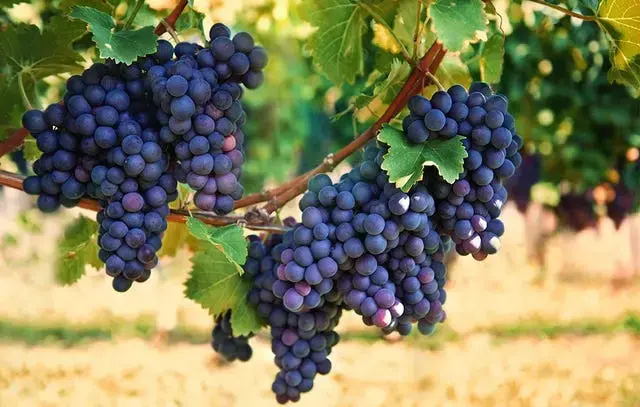
Appearance:
Color: The most defining feature is their intense color. They can be deep purple, bluish-black, or almost black. This dark hue comes from a high concentration of anthocyanins, powerful antioxidants.
Shape: Typically round to oval, sometimes slightly elongated depending on the specific variety. They usually grow in medium to large, often compact, clusters.
Size: Generally small to medium-sized berries.
Skin: Smooth, relatively thin, and edible. Many varieties exhibit a "bloom" – a powdery, whitish, natural coating on the skin. This bloom is a sign of freshness and helps protect the grape from moisture loss; it's not a defect and is safe to eat.
Flesh: The flesh is typically translucent, ranging from pale green to a slightly reddish hue, depending on the variety and ripeness.
Flavor Profile & Aroma:
Taste: Black grapes are renowned for their rich, intense sweetness. Many varieties also possess a distinctive muscat flavor – a floral, aromatic, and sometimes slightly spicy note that adds complexity to their sweetness. Some varieties may have a very subtle tartness to balance the sweetness.
Sharad Seedless: Known for being very sweet and crisp.
Bangalore Blue: Often described as having a foxy (earthy, sometimes slightly musky) flavor, popular for both fresh eating and juice/wine.
Aroma: They have a pronounced and inviting sweet, fruity, and often aromatic fragrance, especially when fully ripe.
Texture:
Crispness/Tenderness: The texture can vary. Some black grape varieties are crisp and firm (like Sharad Seedless), offering a satisfying bite, while others can be more tender and juicy.
Juiciness: They are very juicy, making them refreshing for fresh consumption and ideal for juices.
Seedless/Seeded: Both seeded and seedless black grape varieties exist.
Sharad Seedless is a popular seedless variety.
Bangalore Blue is typically a seeded variety. Seeded grapes contain small, edible seeds, though some prefer seedless for convenience.
Size & Weight:
Individual berries are usually small to medium, forming substantial bunches.
Seasonality & Availability (in India):
In India, black grapes (like Sharad Seedless and Bangalore Blue) are primarily harvested during the winter and spring months, generally from November/December to March/April. This period aligns with their peak availability in markets across the country, including Kochi.
Other Notable Characteristics & Uses:
Table Grapes: Most commonly consumed fresh as a table grape.
Culinary Versatility:
Fresh Snacking: An excellent and popular healthy snack.
Juices: Widely used to make fresh juice due to their high juice content and rich flavor.
Desserts: Incorporate well into fruit salads, tarts, and other desserts.
Wine: Some black grape varieties (like Bangalore Blue in India) are also used in wine production, contributing to red wines.
Raisins: Certain black grape varieties can be dried to make dark raisins.
Health Benefits: Black grapes are highly valued for their nutritional profile. They are rich in:
Antioxidants: Especially anthocyanins (which give them their dark color) and resveratrol, known for their potential benefits in heart health, anti-inflammatory properties, and anti-aging effects.
Vitamins: Good source of Vitamin C and Vitamin K.
Minerals: Contain potassium and manganese.
Fiber: Contribute to digestive health.
In summary, black grapes are a delightful and healthy fruit, cherished for their deep, attractive color, intense sweetness often accompanied by a complex muscat flavor, and juicy, crisp (or tender) texture. They are a versatile fruit, enjoyed fresh and used in various culinary preparations, making them a popular choice in India during their season.

